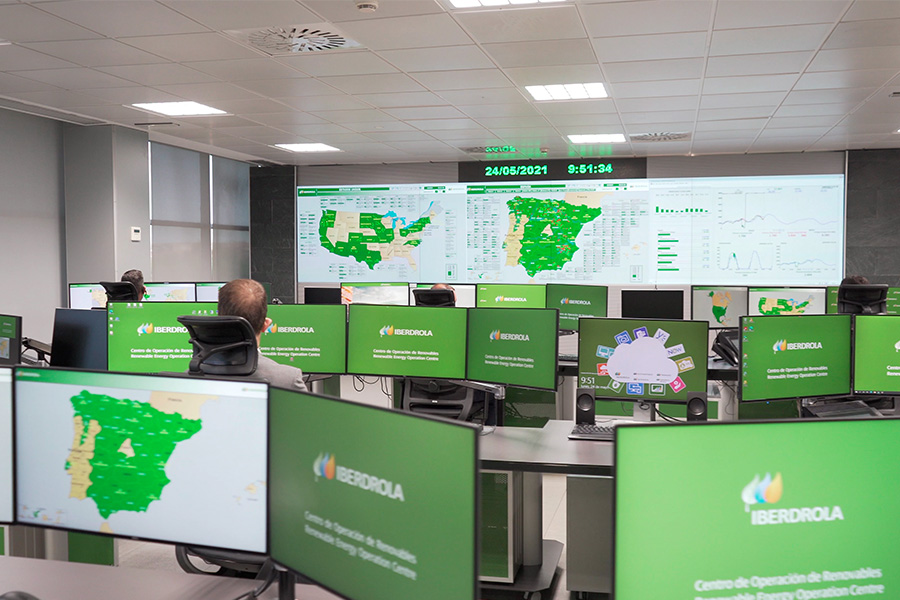Iberdrola's CORE in Toledo celebrates its 20th anniversary
-
The Renewables Operation Centre (CORE) was a pioneering project worldwide.
-
The CORE controls and operates in real time the operation of Iberdrola's wind, photovoltaic and battery facilities in Spain, Portugal, Greece, Mexico, Hungary, Romania, Italy, France, Cyprus, Poland, Brazil and Australia.
-
In the coming weeks, visits will be organised so that different professionals can get to know it from the inside.

The Toledo Renewables Operation Centre (CORE) is 20 years old. It came into operation at the end of 2003 to manage the wind and photovoltaic farms of Iberdrola Renovables, a subsidiary that had been set up just a year earlier. Its objective was to improve the technical management and economic performance of the facilities in order to increase the quality of the renewable energy supplied.
It began by supervising 29 Spanish wind farms, but very soon electrical substations and hydroelectric power plants were integrated into it, as well as other wind installations located in countries such as France, Italy, Portugal, Poland and Germany. At present, the centre operates from Toledo more than 300 wind farms, photovoltaic plants, electrical substations and batteries located in 11 countries. The CORE monitors more than 3,000,000 data in real time and controls more than 13,000 MW of active power.
For Gustavo Moreno, head of CORE, "this centre has been replicated in other parts of the world and also by other companies, which strengthens the idea that it is truly a success story. More than 50 people work here, handling some 10,000 wind turbines and photovoltaic inverters. If we detect a problem with a wind turbine remotely, we can fix it within minutes, or start producing power when needed".
The Toledo CORE was the first facility of its kind to be commissioned anywhere in the world and became an international high-tech benchmark. During its 20 years of operation, it has undergone constant evolution and has been the forerunner of new applications and progress in the planning, operation and maintenance of wind and photovoltaic farms. The company has exported the Spanish model to other countries where it has developed renewable energy control centres. This is the case of the centres in Portland (United States) in 2010, Whitlee (Scotland) in 2011 and Rio de Janeiro (Brazil) in 2019.
The main functions of the Toledo CORE include attending to incidents remotely, having all the operating information available centrally and incorporating new energy control functions. A specialised staff made up of operators, engineers and IT specialists provides remote support for any incident that may occur in the facilities connected to the centre.
The CORE allows for technological innovation, real-time operation and control of the status of installations, intelligent alarm management, incident management, optimisation of operating costs, increased availability and production, acquisition, processing and storage of information, infrastructures and value-added services with a high degree of specialisation.
This increases plant availability and improves personnel management. In addition, centralised and standardised management improves maintenance processes.
Since its opening in 2003, this strategic facility has been fundamental for the development and improvement of the operation of renewable energy installations, allowing the technical management of the installations to be optimised, as well as their economic performance, thus improving the quality of the renewable energy supplied.
Getting to know a unique facility
To mark the twentieth anniversary and to raise awareness of this project, Iberdrola will be organising various visits with professionals, engineers and journalists who will be visiting the Centre over the coming weeks.
Throughout these years, CORE has received many visits from professionals and governments from all over the world who have used the Toledo project as a model and example to export to other places. Today it is a technological reference point located in the city of the three cultures.
